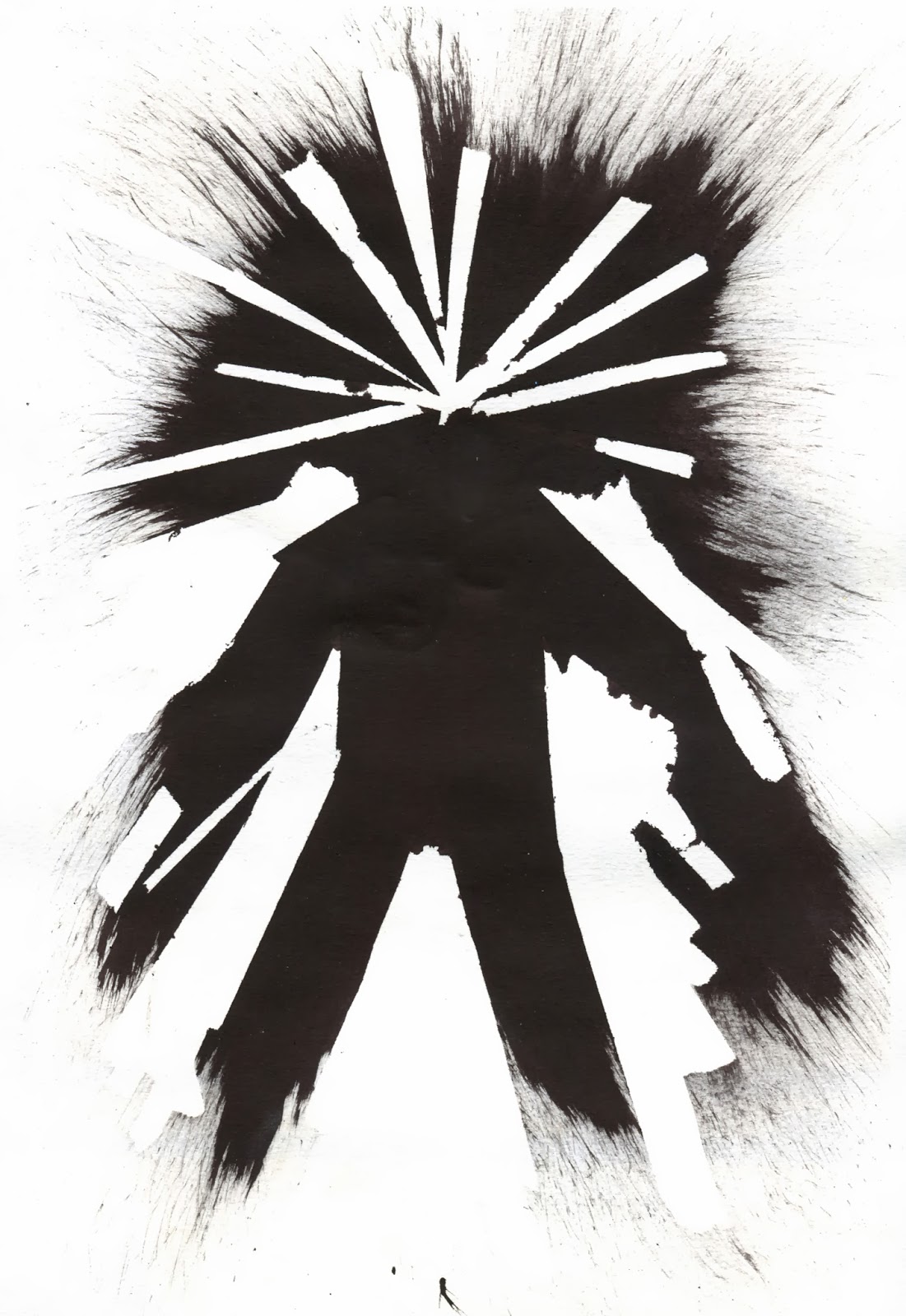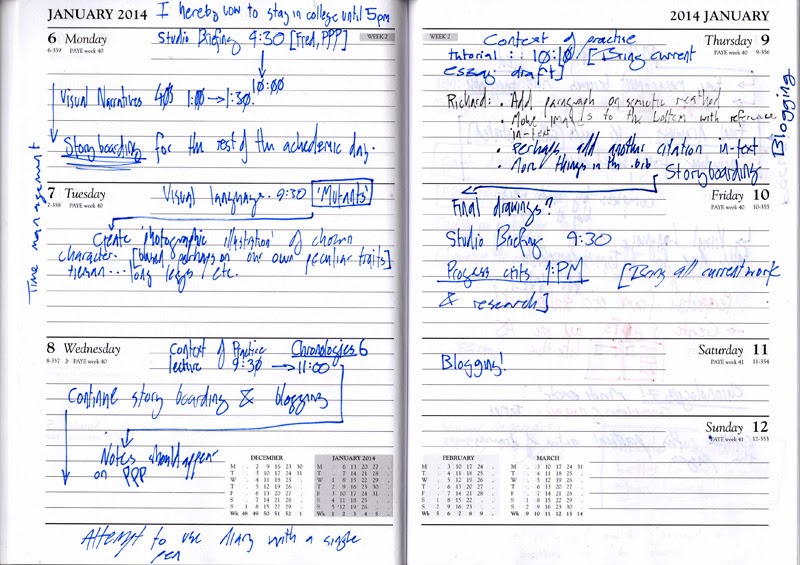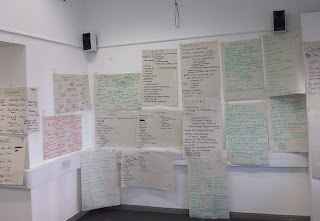tl:dr version in .pdf:
10 things that you have learned about yourself as an individual and as learner. These should reflect your personal development and individual journey since the start of the programme.
.Since the beginning of the semester I have better appreciated that the group shares common issues with procrastination, for example, I tend to play video games (Team Fortress 2) exorbitantly.
MrComrade
.Unforeseen events are inevitable, but can be dealt with through flexible time management.
Makani
.I find that I am most productive earlier in the day, and generally become more lax around the lunch hour, and then gain momentum toward 5pm.
Paul Lee
.The creative process is susceptible to doubt and fatigue, which can be tackled by investing emotionally into a project.

Heather Hudson
.Previously, I had the habit of underestimating the time allowances required to produce work.
Gary Larson
.Planning in advance by the hour clarifies the workload.
.When collaborating or discussing, I find it easier to talk to a crowd, rather than say, one-on-one.

Eric Peterson
.The choice to live at home this year has been frustrating due to travel demands, luckily I have now booked student accommodation a short walk from college.
ukbus
.During a short part-time job manning a pop-up shop, I learned that drawing to alleviate boredom is most productive.
One of the many drawings from a six-hour shift of no customers
.Consciously listening to music distracts from the working process (a playlist will tempt me to skip songs), while listening to the radio will allow me to focus better.
10 things that you have learned about yourself as an illustrator. These should reflect your growing awareness of your own interests within illustration as a subject, discipline and profession.
.I thoroughly enjoy using the brush-based mediums on a larger scale, it allows me to explore more gestural lines, rather than my usual methodical fine-liner or biro work, additionally, once I have stopped using biro so much I realise that I do not miss it.
.I find that I am more objective (and cynical) in regards to my personal interests since engaging in the context of practice module.
Kate Beaton
.Collage can be used to create subversive themes of humour and horror (and to a further extent, there is a fine line between humour and horror).
.Repeated studies of reference builds a personal confidence in drawing, and a more expansive catalog of spontaneous drawing.
.I find that I am never utterly content with any resolution, and there is always room for improvement.
.Less successful illustration and practice no longer dents my pride to the extent that I rip out pages, now I tend to repeat the product until it vaguely works.

.Photography is a great supportive asset of drawing from life, it allows later visual responses to become more informed and closer to what I would define as good.
.The digital side of illustration should be regarded as another tool, not more or less valuable as analogue forms of production.
.I am somewhat closer to understanding my intentions of being a professional, in that I aim to avoid producing exclusive and purposeless illustration.



































